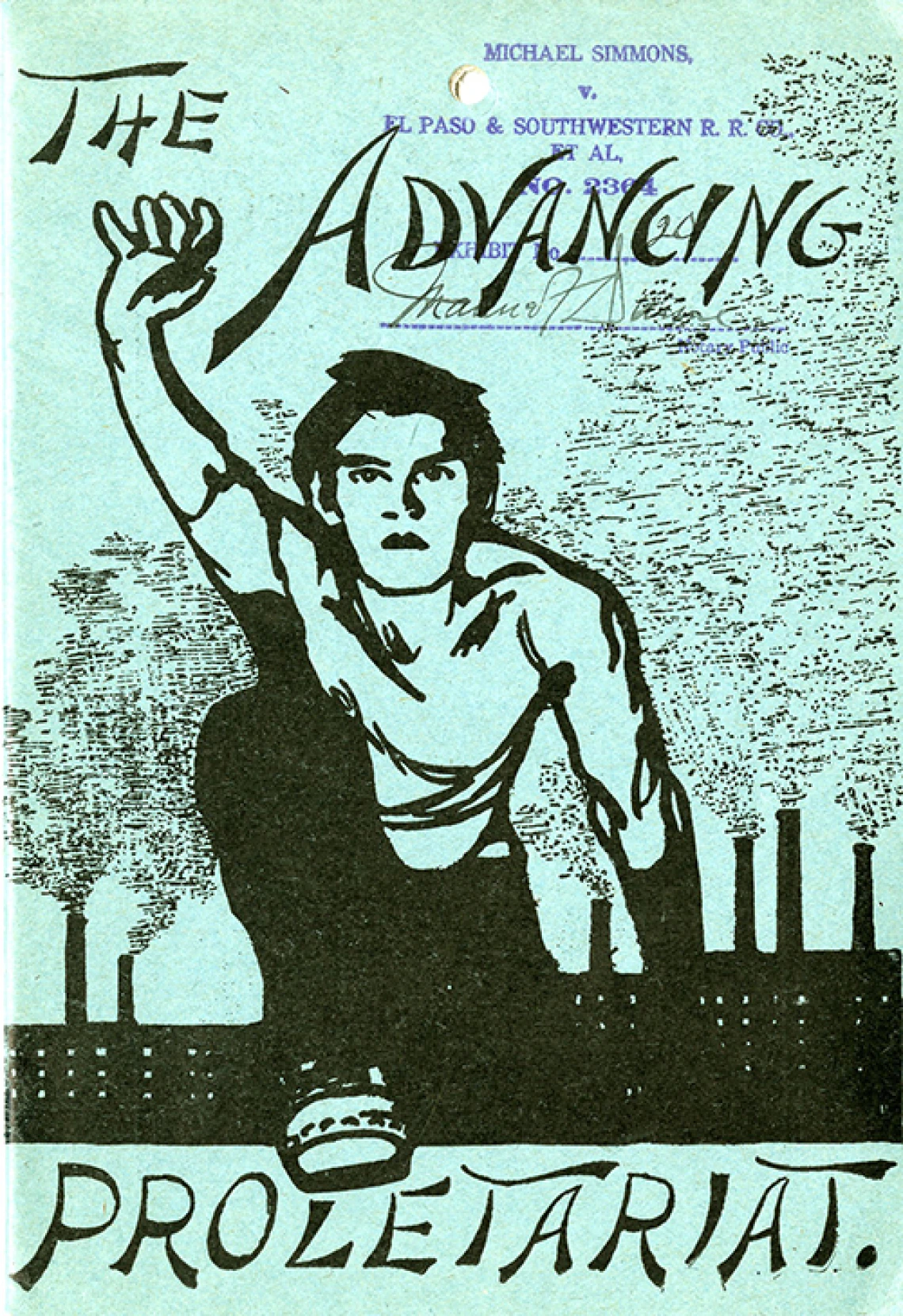Bisbee Deportation legal papers and exhibits

Promotional Image for Exhibit
Collection area: Political Affairs
Collection dates: 1917-1919
Includes materials from 1916-1920. Exhibits presented in the suit of Michael Simmons vs. the El Paso and Southwestern Railroad Co. et al. The exhibits include photostatic copies of correspondence of the I.W.W. and I. W. W. leaflets. They also include original I.W.W. pamphlets and one photograph. The list items contain the exhibit number, the name of the item, the author, the number of pages, and the date, where available. In the case of pamphlets, full bibliographic reference is given. The exhibits in the Simmons vs. El Paso and Southwestern Rail Road suit are numbered from 1 through 181. The exhibits in the State of Arizona vs. Harry Walters are referred to as Butte Exhibit, Defendant's Exhibit, Salt Lake Exhibit, and Spokane Exhibit.
In the early 1900s, Bisbee was a boom town controlled by mining companies. By 1917 the price of copper had increased due to World War I, leading to enormous profits for companies and their shareholders. Union activity was becoming more and more prevalent in mining communities during this period. The International Workers of the World (I.W.W.) had been actively recruiting miners, and on June 24, 1917 sent a list of demands to the Bisbee mining companies. The demands included safer working conditions, a fixed wage instead of a sliding scale wage, and an end to discrimination of foreign and minority workers. All demands were rejected, and as a result, a strike was called. Over half of Bisbee's miners went on strike.
The deportation occurred on July 12, 1917 when Sheriff Harry C. Wheeler led a vigilante group that rounded up 1,186 men (some of whom were not even strikers) and abandoned them at Hermans, New Mexico. Guards surrounded the town to prevent the deportees from returning. Others perceived as disloyal were tried and faced deportation as well. On July 14, government troops escorted the miners to Columbus where they continued to be held. Several months later, the Federal Mediation Commission set up by President Wilson, found that the mining companies were at fault in the deportation. However, they also found that no federal laws applied to the actions and referred the matter to the state of Arizona. Although the state took no action, several civil suits were brought by the deportees against the mining companies were settled out of court. All but one suit brought against individual vigilantes were dismissed. The one suit that went to trial ended in a not guilty verdict. The Bisbee Deportation had a lasting influence throughout the United States.
A collection guide explains what's in a collection. New to using our collections? Learn how to use a collection guide.
Collection guideAccess this collection
Visit us in person to access materials from this collection. Our materials are one-of-a-kind and require special care, so they can’t be checked out or taken home.
How to cite
Learn how to cite and use materials from Special Collections in your research.
